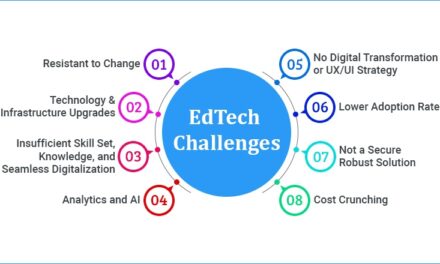The traditional classroom landscape is undergoing a transformation. Fueled by technological advancements and a growing desire for personalized learning experiences, educational technology (EdTech) is rapidly gaining momentum in Canadian schools. This blog delves into the growing importance of EdTech, exploring its potential to revolutionize how Canadian students learn and educators teach.
The Rise of EdTech: Beyond Textbooks and Blackboards
Gone are the days of solely relying on textbooks and blackboards. EdTech encompasses a broad spectrum of tools and platforms, including:
- Interactive Learning Apps: Gamified learning experiences and interactive simulations can make learning engaging and cater to diverse learning styles.
- Learning Management Systems (LMS): These platforms offer a centralized hub for online course materials, communication tools, and student performance tracking.
- Virtual Reality (VR) and Augmented Reality (AR): These immersive technologies can transport students to faraway locations or allow them to visualize complex concepts in 3D, fostering deeper understanding.
- Artificial Intelligence (AI): AI-powered tutors can provide personalized learning paths and real-time feedback, adapting to individual student needs.
The Benefits of EdTech for Students and Educators
The integration of EdTech offers a multitude of benefits for both students and educators:
For Students:
- Personalized Learning: EdTech tools can tailor lessons to individual learning styles and pace, allowing students to progress at their own rhythm.
- Enhanced Engagement: Interactive and gamified learning experiences can spark curiosity and make learning fun.
- Improved Access to Information: Online resources and digital libraries offer a vast amount of information at students’ fingertips.
- Development of Digital Skills: EdTech tools can equip students with essential digital literacy skills crucial for success in the 21st century.
For Educators:
- Streamlined Workflow: LMS platforms can organize course materials, manage assignments, and track student progress efficiently.
- Data-Driven Instruction: EdTech tools provide real-time data on student performance, allowing educators to tailor their instruction accordingly.
- Differentiation Strategies: Technology allows educators to cater to diverse learning needs by providing alternative learning materials and activities.
- Collaboration Opportunities: Online platforms enable collaboration between students in the classroom and across geographical boundaries.
Challenges and Considerations: Navigating the EdTech Landscape
Despite its potential, integrating EdTech into classrooms presents challenges:
- Digital Divide: Unequal access to technology and reliable internet poses a barrier for some students. Addressing this disparity is crucial.
- Teacher Training: Educators need adequate training on using EdTech tools effectively in the classroom to maximize their benefits.
- Screen Time Concerns: Finding a balance between technology use and traditional learning methods is essential to ensure holistic development.
The Future of EdTech in Canadian Schools: A Collaborative Approach
The future of EdTech in Canadian schools is bright. As technology continues to evolve, we can expect even more innovative tools and platforms to emerge. Collaboration between educators, policymakers, and technology developers will be key to addressing challenges, ensuring equitable access, and fostering a seamless integration of EdTech into the learning environment.
Conclusion: Empowering the Next Generation of Learners
EdTech is not a replacement for the irreplaceable role of educators; it’s a powerful tool to enhance learning and empower students. By embracing the potential of EdTech, Canadian schools can create a dynamic and engaging learning environment that prepares students for future success in the ever-evolving digital world.










